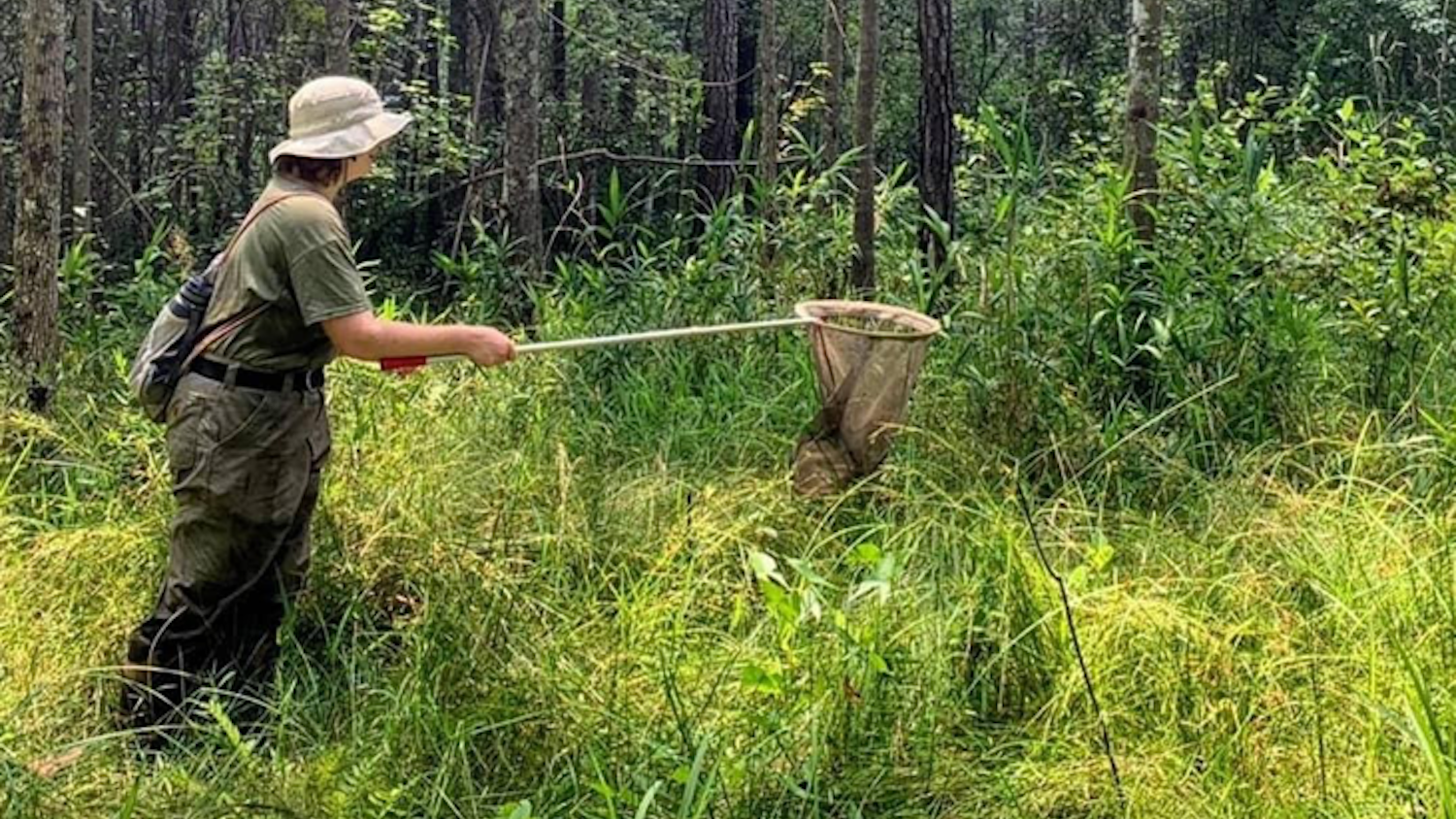Emma Wilson: St. Francis’ Satyr Field Technician

It was my first semester at North Carolina State University: I was sitting in the front row of my Ecology course, and I was excitedly listening to the lecture on landscape ecology. My professor was speaking about the impacts of corridors and the work of Dr. Nick Haddad at the Savannah River Site.

“He taught at NC State, you know,” my professor said. “He’s up in Michigan now though.”
I learned forward in my seat and remember deciding, I am going to work with him.
Flash forward—it is July 22nd, 2020, and I have spent the last two months as a field technician conserving the amazing St. Francis’ satyr (Neonympha mitchellii francisci), a beautiful and endangered subspecies of butterfly found only in a few riparian sedge meadows of the Fort Bragg Military Installation.
I walked through the research plot, scanning around me. The second flight period was expected to begin any day now, and I was eagerly waiting to see the characteristic bouncy flight of the St. Francis’ satyr. The boards of the transect beneath me rocked back and forth. Slowly, I brushed my six-foot butterfly net gently over the tops of sedges.
There!
A small brown butterfly floated through the air, and my heart leapt in excitement! I would know that movement anywhere. I dashed across the wooden boards and swung my net, scooping up the precious creature. I had caught the first butterfly, and the second flight period had begun!
I let out an excited shriek as I called to my coworker, “A satyr! A satyr!”

She called out in excitement, and we started cheering. She dashed over to celebrate with me. I reached inside my net and gently took hold of the butterfly, being sure to clasp both the forewings and the hindwings. To mark the butterfly, I removed a fine-tipped Sharpie from my pocket, scribbled on my thumb nail to get the ink flowing, and wrote “01” on both sides of the wings (this mark-and-recapture technique was initially shocking to me, but I was quickly assured that it is not harmful to them).
In that moment, I thought about the time leading up to that instant: Resting a tiny butterfly egg on the edge of my fingernail as I collected eggs from oviposition chambers, hauling tree trunks as we stored butterfly habitat from woody encroachment, feeding the butterflies by hand, meeting Dr. Haddad after I accepted a position in his lab, sitting in my Ecology class many moons earlier, and much more. I felt my heart swell with immense joy—from the realization of dreams—from the great success of the St. Francis’ satyr conservation project—from the incredible experiences I had as a part of my team. I am so thankful to have had the opportunity to practice conservation hands-on with such a special species, and I am thrilled to continue working to protect the beautiful diversity of life on our planet.